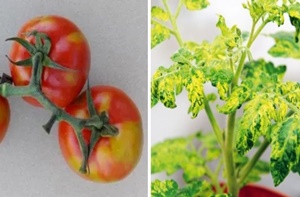Virus de la mosaïque du pepino: une grave menace pour les plants de tomate dans le monde entier
Résumé
La tomate (Solanum lycopersicum) est l’une des cultures largement cultivées dans le monde entier. Elle est consommée sous diverses formes et possède d’excellentes valeurs nutritionnelles. À l’heure actuelle, cette culture est confrontée à une grave menace pour son rendement et sa survie en raison de l’infection par les potexvirus. Un des potexvirus qui entravent la production des tomates dans le monde entier est le virus de la mosaïque du pepino (PepMV). Ce virus émergent est l’une des maladies des plantes les plus destructrices qui détruisent la culture de tomate à l’échelle mondiale. Le virus s’est propagé dans de nombreux pays, y compris la France, l’Italie, le Royaume-Uni, la Pologne, la Belgique, les États-Unis, le Canada et la Chine. Le génome du PepMV se compose d’une molécule d’ARN simple brin à polarité positive, d’environ 6,4 kb de longueur. L’ARN génomique contient cinq cadres ouverts de lecture (ORF) codant pour la protéine de la capside (CP), La protéine de la réplicase (RdRp) et la protéine de bloc génique triple (TGB). PepMV est transmis de manière efficace mécaniquement. Dans d’autres études, la transmission par les semences a été démontrée. Cet article donne un aperçu sur les symptômes, la transmission, les différentes souches du PepMV, son organisation et les stratégies utilisées pour contrôler le génome. Les connaissances des progrès récents dans l’étude du PepMV pourraient aider à développer de nouvelles stratégies pour son contrôle dans le secteur agricole.
Mots clés: PepMV, Tomate, potexvirus, génome, transmission, contrôle.
Téléchargements

Publié-e
Comment citer
Numéro
Rubrique
Licence

Revue Marocaine des Sciences Agronomiques et Vétérinaires est mis à disposition selon les termes de la licence Creative Commons Attribution - Pas d’Utilisation Commerciale - Partage dans les Mêmes Conditions 4.0 International.
Fondé(e) sur une œuvre à www.agrimaroc.org.
Les autorisations au-delà du champ de cette licence peuvent être obtenues à www.agrimaroc.org.

